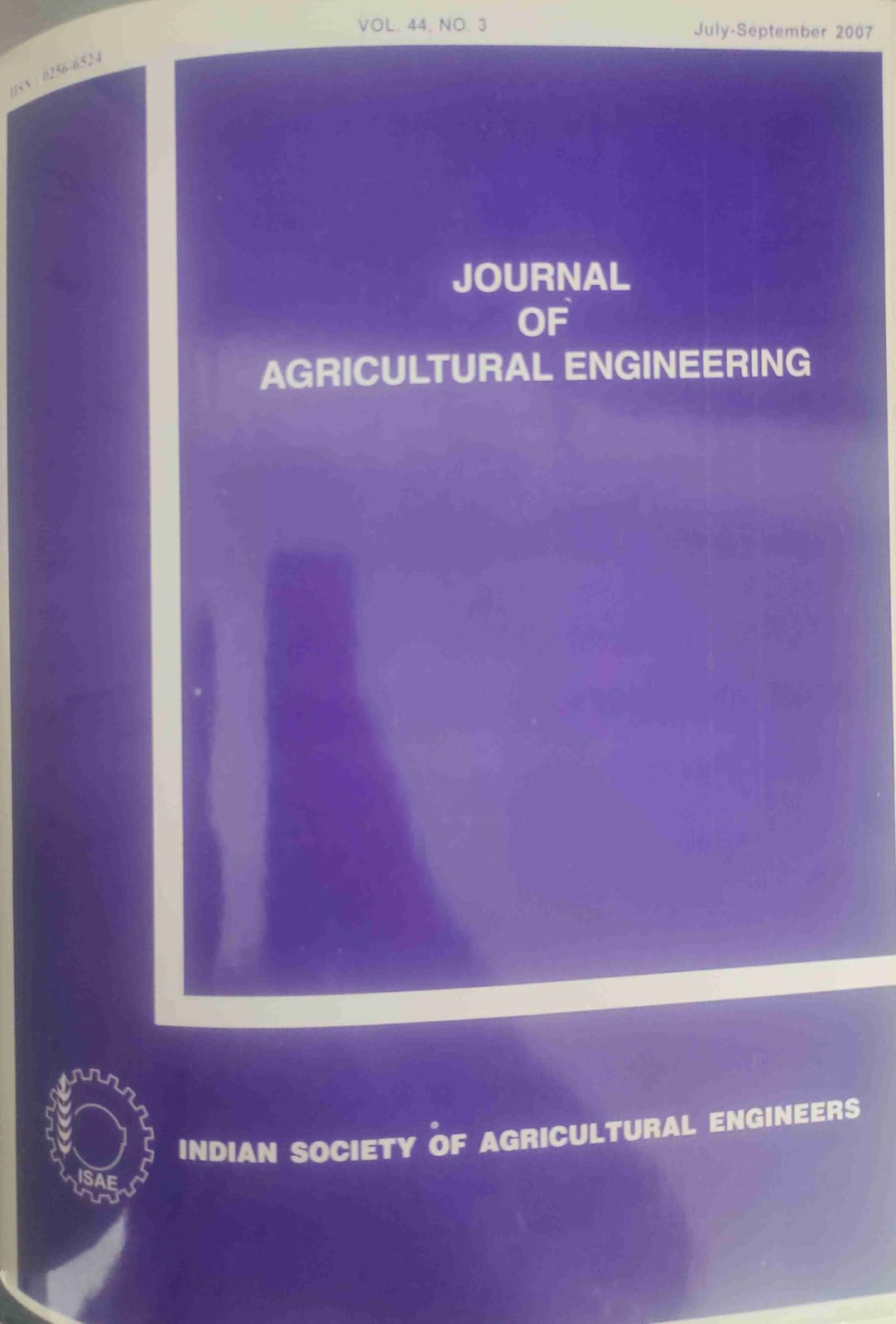Imaging and Soft Computing for Online Trash Identification in Cotton
DOI:
https://doi.org/10.52151/jae2007443.1287Abstract
A general framework for automating ginning process using computer-vision-based approach for online trash identification and removal is presented in this study. It involves trash identification using imaging and consequently trash classification and estimation using soft computing techniques of artificial neural network. A computer programme was developed to automate image capture, analysis and computing processes generating overall statistics of trash content in cotton lint. Measurement of trash features such as area, perimeter, convex perimeter, ferret meandiameter, ferret elongation, elongation, length and compactness yielded higher values in stick trash type as comparedto leaf objects. There was not much difference in breadth and roughness of these trash types. Designed back propagation classifier system correctly distinguished 60% trash types with 80-99% confidence measure (CM), 25% data with CM 40-80%, 10% data with CM 20-40% and 5% data left undefined or wrongly identified with CM less than 10%. Information on trash types present in cotton can be used to appropriately configure cleaning and ginning machineries. Overall benefit is increased bale value and energy savings that add to monetary gain. It also assists in online assigning of classer grade to processed bales
References
Jang J S R; Sun C T; Mizutani E. 1996. Neuro-Fuzzy and Soft Computing, Prentice Hall, Englewood Cliffs, New Jersey.
Lieberman MA. 1989. Cotton trash analysis and modem imaging techniques, Proceedings of the Beltwide Cotton Conferences, 591-602.
Lieberman MA; Patil R B. 1997. Evaluation of leaming vector quantization to classify cotton trash. Optical Engng., 36(3), 914-921.
Lin C T; George Lee C S. 1996. Neural Fuzzy Systems. Prentice Hall, Englewood Cliffs, New Jersey.
Mayfield W D; Anthony W S; Baker R V; Hughs S E. 1994. Effects of gin machinery on cotton quality. Cotton Ginners Handbook, U.S. Department of Agriculture Handbook 503,239.
Russ John C. 1994. The Image Processing Handbook. CRC Press, 2nd edition, Boca Raton.
Smith S W. 1999. The Scientist and Engineer's Guide to Digital Signal Processing. Second Edition. California Technical Publishing, San Diego, California














